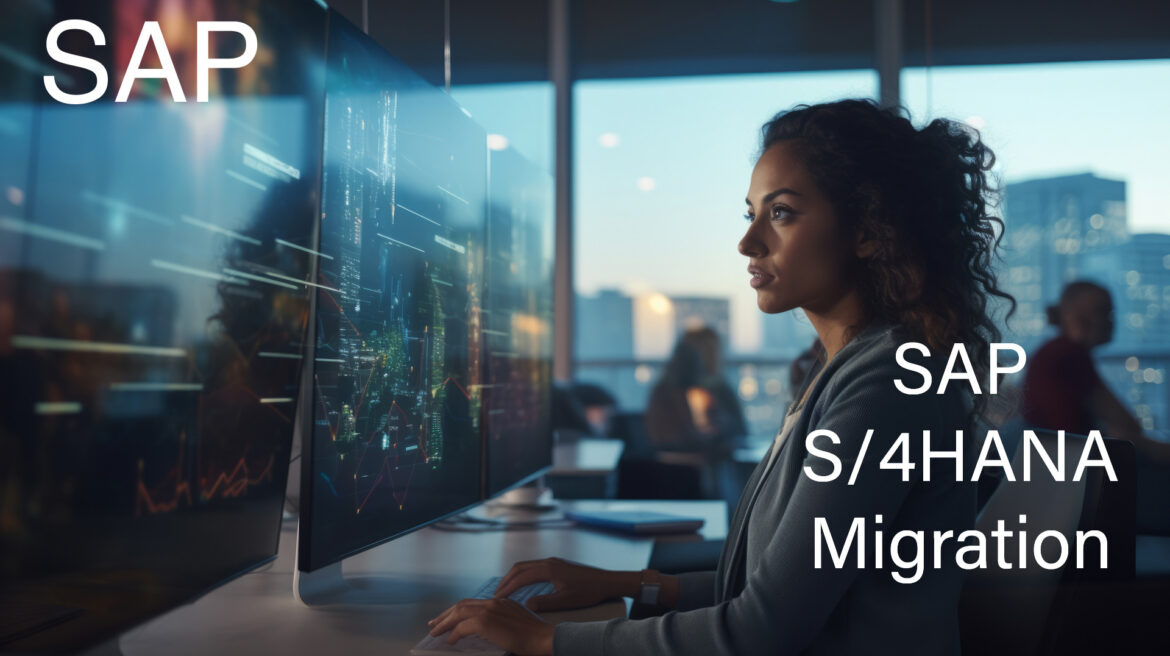Introduction
With SAP ending mainstream maintenance for legacy ERP systems like SAP ECC, businesses worldwide are transitioning to SAP S/4HANA – SAP’s AI-powered, next-gen ERP suite. However, migration involves complexities, from technical upgrades to process redesign. This guide breaks down the journey to help you navigate smoothly.
Why Migrate to SAP S/4HANA?
- End of Support: SAP ECC’s mainstream maintenance ends in 2027.
- Real-Time Insights: Leverage in-memory computing with SAP HANA.
- Simplified Processes: Unified data model and embedded AI/ML.
- Cloud Flexibility: Choose hybrid, public, or private cloud deployment.
SAP S/4HANA Migration Roadmap: 6 Key Steps
1. Assessment & Planning
- Analyze current SAP ECC/legacy system landscape.
- Identify custom code, integrations, and data quality gaps.
- Define migration strategy: Greenfield, Brownfield, or Bluefield.
2. System Preparation
- Upgrade to SAP HANA database (if not already running).
- Cleanse redundant data and archive historical records.
3. Custom Code Adaptation
- Use tools like SAP S/4HANA Migration Cockpit to adjust legacy code.
- Simplify processes to align with S/4HANA’s best practices.
4. Data Migration
- Map data from legacy systems to S/4HANA’s simplified structures.
- Validate data integrity with automated testing tools.
5. Testing & Validation
- Conduct end-to-end testing (unit, integration, UAT).
- Optimize performance and resolve bottlenecks.
6. Go-Live & Support
- Deploy with minimal downtime using SAP’s DMO (Database Migration Option).
- Provide post-migration training and hypercare support.
Top Challenges in SAP S/4HANA Migration
⚠️ Data Complexity: Legacy data silos and inconsistencies.
⚠️ Custom Code Issues: Non-compliant ABAP code requiring refactoring.
⚠️ Process Redesign: Adapting to SAP Fiori UX and new workflows.
⚠️ Cost Overruns: Unplanned expenses due to scope creep.
⚠️ Change Management: User resistance to new systems and processes.
Best Practices for a Successful Migration
✅ Start Early: Begin planning 12-18 months before the deadline.
✅ Engage Stakeholders: Involve IT, finance, and end-users early.
✅ Leverage SAP Tools: Use SAP Readiness Check and Maintenance Planner.
✅ Adopt Agile Methods: Break migration into sprints for flexibility.
✅ Partner with Experts: Collaborate with SAP-certified consultants.
SAP ECC vs. SAP S/4HANA: Key Differences
| Aspect | SAP ECC | SAP S/4HANA |
|---|---|---|
| Database | Traditional (Oracle, DB2) | SAP HANA (in-memory) |
| User Experience | SAP GUI | SAP Fiori (responsive, intuitive) |
| Data Model | Complex, redundant | Simplified (e.g., ACDOCA table) |
| Analytics | Batch processing | Real-time with embedded AI |
| Deployment | Primarily on-premise | Cloud, hybrid, or on-premise |
Conclusion
Migrating to SAP S/4HANA is a technical upgrade and a strategic transformation. By following a structured roadmap, anticipating challenges, and adopting best practices, businesses can unlock faster decision-making, scalability, and innovation.




